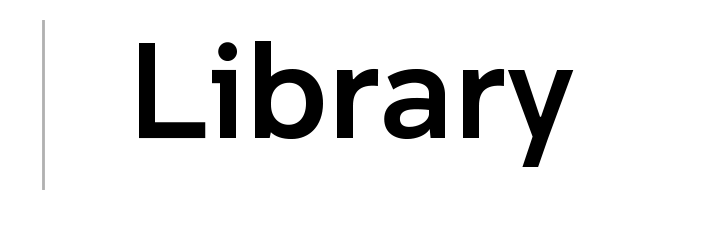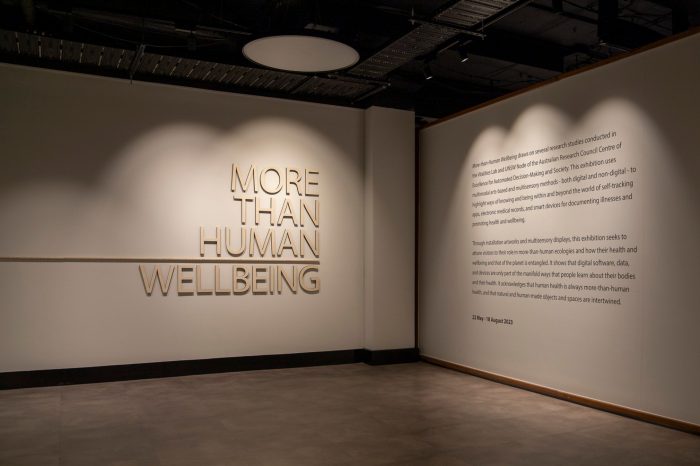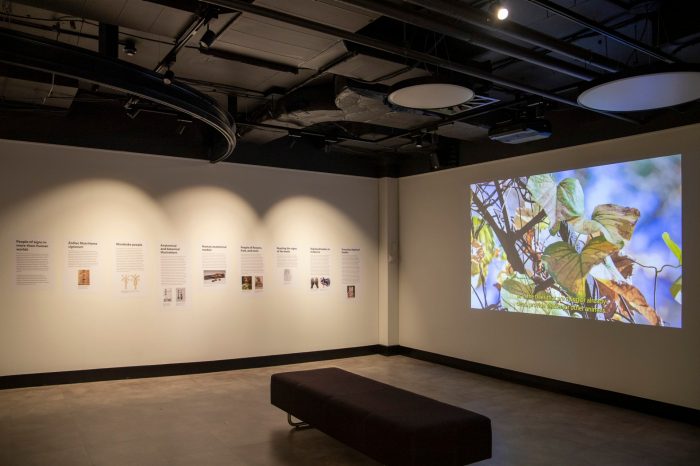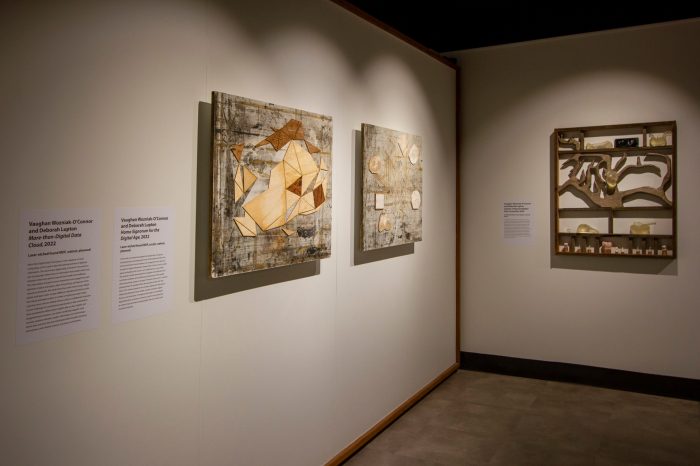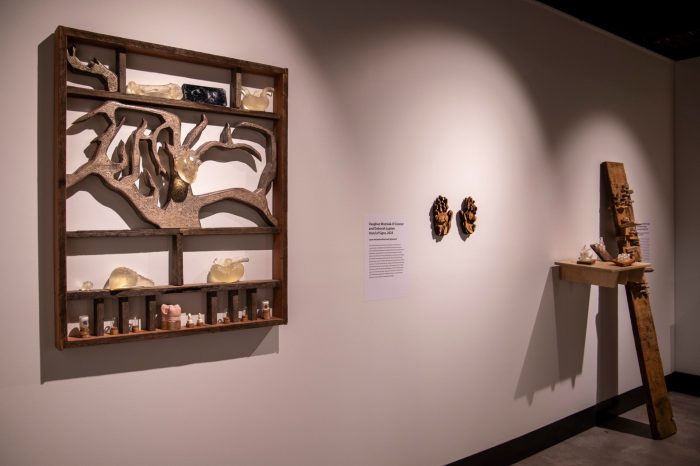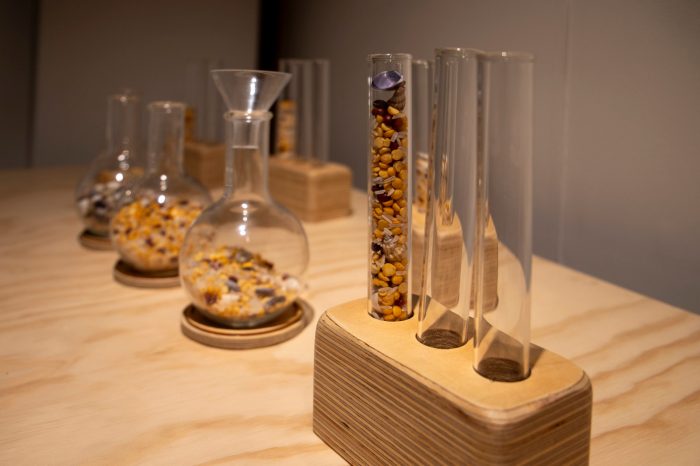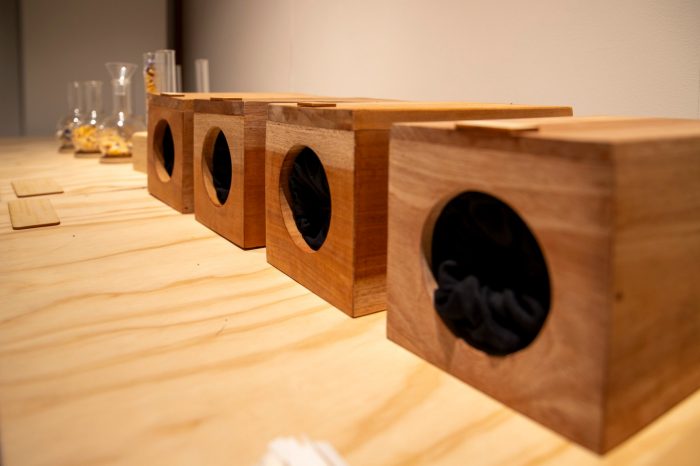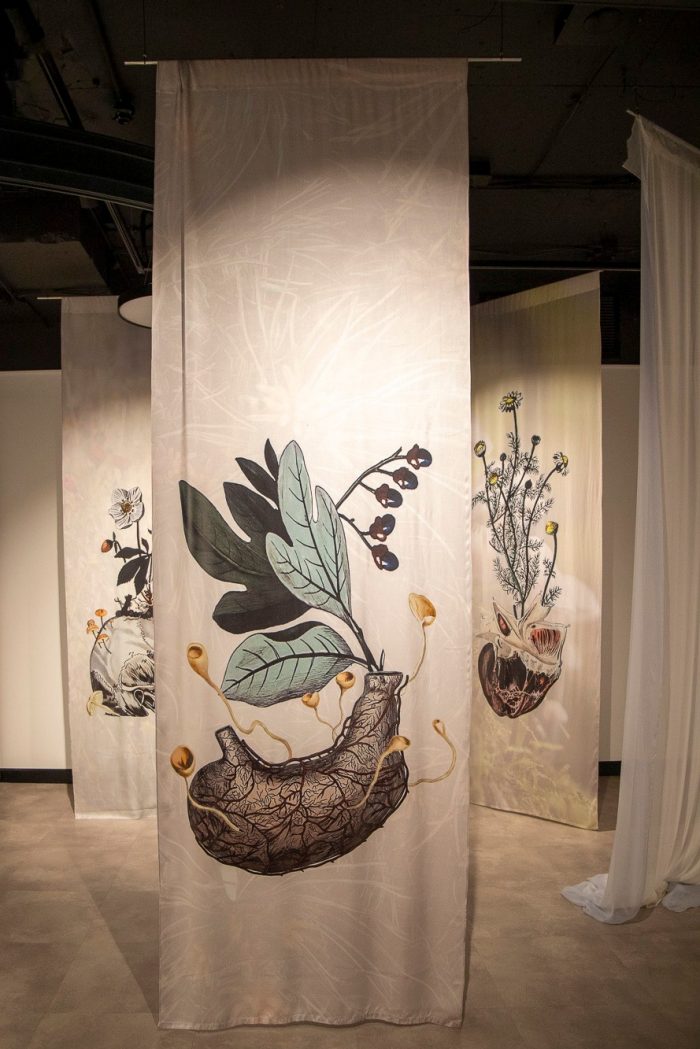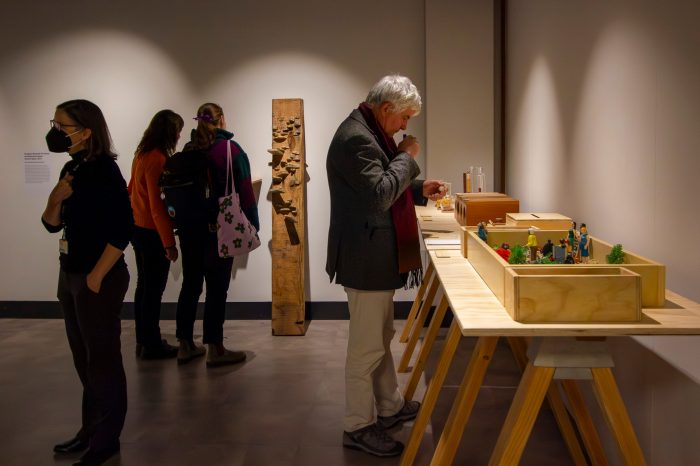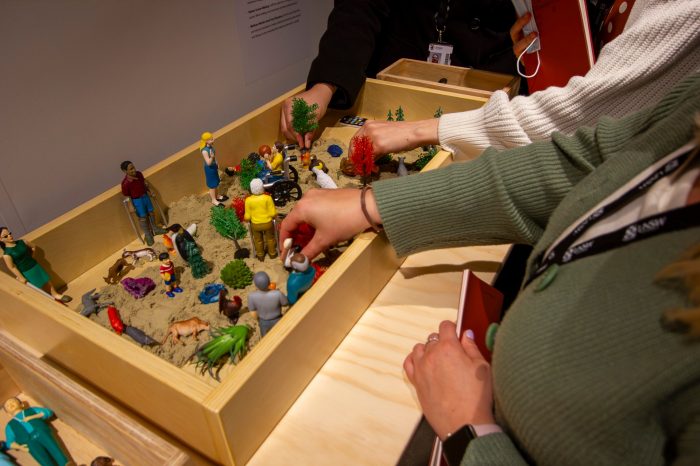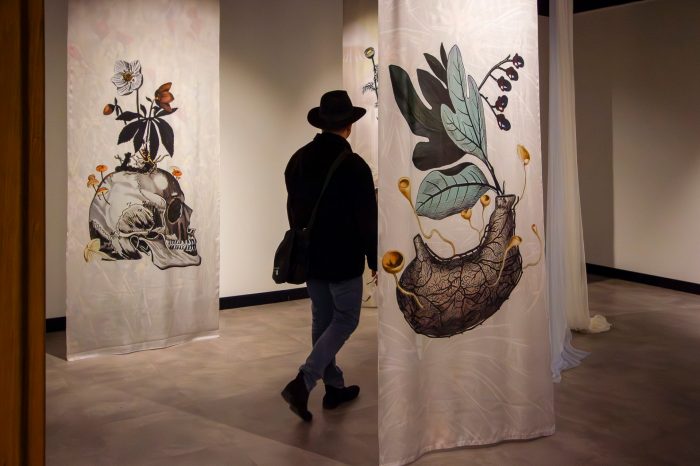More-than-Human Wellbeing
More-than-Human Wellbeing draws on several research studies conducted in the Vitalities Lab and UNSW Node of the Australian Research Council Centre of Excellence for Automated Decision-Making and Society. This exhibition uses multimodal arts-based and multisensory methods - both digital and non-digital - to highlight ways of knowing and being within and beyond the world of self-tracking apps, electronic medical records, and smart devices for documenting illnesses and promoting health and wellbeing.
When:
22 May - 18 August 2023
Where:
Level 5 Main Library
Team:
Deborah Lupton
Vaughan Wozniak-O'Connor
Megan Rose
Ash Watson
Partner:
Automated Decision-Making and Society (ADM+S)
Through installation artworks and multisensory displays, this exhibition seeks to attune visitors to their role in more-than-human ecologies and how their health and wellbeing and that of the planet is entangled. It shows that digital software, data, and devices are only part of the manifold ways that people learn about their bodies and their health. It acknowledges that human health is always more-than-human health, and that natural and human-made objects and spaces are intertwined.
This exhibition is developed in collaboration with Vitalities Lab, UNSW Node of the Australian Research Council Centre of Excellence for Automated Decision-Making and Society (ADM+S), Centre for Social Research in Health, Social Policy Research Centre, Faculty of Arts, Design & Architecture, UNSW Sydney, and Health Consumers NSW.
For more information on this project see Deborah Lupton - The More-than-Human Wellbeing Exhibition.
Accessibility: UNSW Main Library is wheelchair accessible. Large-text artwork labels, audio-described guides, and braille exhibition guides were available.
Exhibition text
See the exhibition reader for essays and the list of works featured. Download the More-than-Human Wellbeing art labels below.
Exhibition image gallery
Audio guide
Dr Vaughan Wozniak-O’Connor audio-describes the artworks featured in More-than-Human Wellbeing. The approximate run time is 8 minutes.
-
Transcript of audio description at exhibition entry
This audio guide to More-than-Human Wellbeing features four stops with information about the exhibition themes and descriptions of key artworks. My name is Dr Vaughan Wozniak-O'Connor, and I am a post-doctoral researcher within the Centre for Automated Decision-Making and Society, and an exhibiting artist within this exhibition. You can access this guide on the UNSW Library exhibition page or by scanning the QR codes using your own device or smartphone in the space. This is stop one, the exhibition introduction.
More-than-Human Wellbeing uses multimodal arts-based and multisensory methods - both digital and non-digital - to highlight ways of knowing and being within and beyond the world of self-tracking apps, electronic medical records, and smart devices for documenting illnesses and promoting health and wellbeing.
Through installation artworks and multisensory displays, this exhibition seeks to attune visitors to their role in more-than-human ecologies and how their health and wellbeing and that of the planet is entangled. It shows that digital software, data, and devices are only part of the manifold ways that people learn about their bodies and their health. It acknowledges that human health is always more-than-human health, and that natural and human-made objects and spaces are intertwined.
-
Transcript of audio description at exhibition gallery 1
This is the second stop in the audio guide for More-than-Human Wellbeing. The gallery space features a series of information panels available as a PDF on the library exhibition page and the film Creative Approaches to Health Information Ecologies by Edmund Renew and Deborah Lupton. Against a backdrop of video clips featuring people, forests, coastlines, plants, clouds, and sparkling water, the audio narrates insights from participants' responses to visual prompts during an online workshop. The resulting film brings these sensations, poetics, and images together to help audiences perceive the sensory and affective forces that enlivened the discussions with the workshop participants.
-
Transcript of audio description at exhibition gallery 2
This is the third stop in the audio guide for More-than-Human Wellbeing, featuring a selection of key works from the exhibition.
The background of the rectangular wall relief titled More-than-Digital Data Cloud by Vaughan Wozniak-O'Connor and Deborah Lupton utilises a found wooden workbench. The tabletop's surface is covered with haphazard scratches, black scribbles made with a permanent marker, and etched illustrations of clouds and feathers. Attached to the workbench is an assortment of angular, geometric shapes of cut timber laser etched with growth rings and wood grain. More-than-Digital Data Cloud plays on the metaphor of cloud computing, a term used to describe external archives of digitised information. This artistic rendering suggests more complex relations between health, information, and technology - where data practices become implicated within broader planetary, atmospheric, and celestial systems, processes, and histories.
A timber shelf frames and compartmentalises a collection of objects in Vaughan Wozniak-O’Connor and Deborah Lupton's artwork Cabinet of Human/Digital/Data Curiosities. Arranged along the four internal shelves are an assortment of curiosities, including antler-like forms out of wood, clear resin bones and human organs, a smartphone with a fractured screen, and along the bottom shelf, a series of small glass vessels housing prosthetic eyeballs and individual teeth. Together, this collection refers to the notion of information and data as human remains assembled to represent and visualise the exterior and interior of human bodies.
The installation Smartphone Fungi by Vaughan Wozniak-O'Connor and Deborah Lupton includes several components. On the left is a small wooden shelf supporting three small sculptures featuring life-sized wooden smartphones with fungal growths in clear resin protruding from the screens. Alongside the shelf is a tall wooden board leaning against the wall. It recalls the look of a fallen tree covered in lichen, with wooden mushroom-like bumps climbing up the surface and timber smartphones laser etched with cracks and battery symbols. Through Smartphone Fungi, the artists make connections between marks made by humans and the ways humans use devices like smartphones to record aspects of their bodies and the natural world.
The interactive activity Sensory Experiments can be found on three wooden tables arranged in a row against a wall. These hands-on activities are designed to engage visitors in creative play to inspire reflection on the key themes of the exhibition. Visitors can interact with any of these 'experiments' in their own time.
Nature Mood Graphs: Use the test tubes and natural materials provided to demonstrate how you are feeling today (for example, your moods and emotions, health states, or wellbeing). Select some materials and pour them into the test tubes at levels that indicate the strength of your feelings.
Essential Elements Feely Boxes: Reach in to touch or smell the materials in the feely boxes. How do these sensations make you feel? What memories do they evoke?
Nature Scents-Making: Sniff the selection of Australian bush scents. What feelings and memories do these evoke for you?
Wellness Worlds Sand Tray Dioramas: Use the sand, figurines, and natural elements to create a diorama showing what people and things in your everyday life make you feel well or unwell.
-
Transcript of audio description at exhibition gallery 3
This is the final and fourth stop in the audio guide for More-than-Human Wellbeing. The four ceiling-mounted tapestries of Megan Rose's artwork Silken Anatomies hang suspended in the space. Three tapestries feature a muted, salmon-pink fabric overlaid with illustrations of leaves, berries, and mushrooms sprouting from human skulls and organs. The fourth tapestry involves two panels of sheer light blue and white fabrics draping the floor. The artwork draws on collage and the material qualities of fabric, including the drape, sheen, and flow of silk to create a sensory experience. The panels depict reconfigurations of botanical and human forms that drift through ethereal curtains of sheer silk chiffon. These illustrations speak of the early modern natural science visualisations that underpin contemporary digital images of the human body and the more-than-human world.
Past events from this exhibition
Opening event
More-than-Human Wellbeing was opened by Professor Claire Annesley, Dean of Arts, Design & Architecture at UNSW and Dr Anthony Brown, Executive Director of Health Consumers NSW, with Martin Borchert, University Librarian, acting as Master of Ceremonies.
Event was held on Monday, 29 May 2023.

